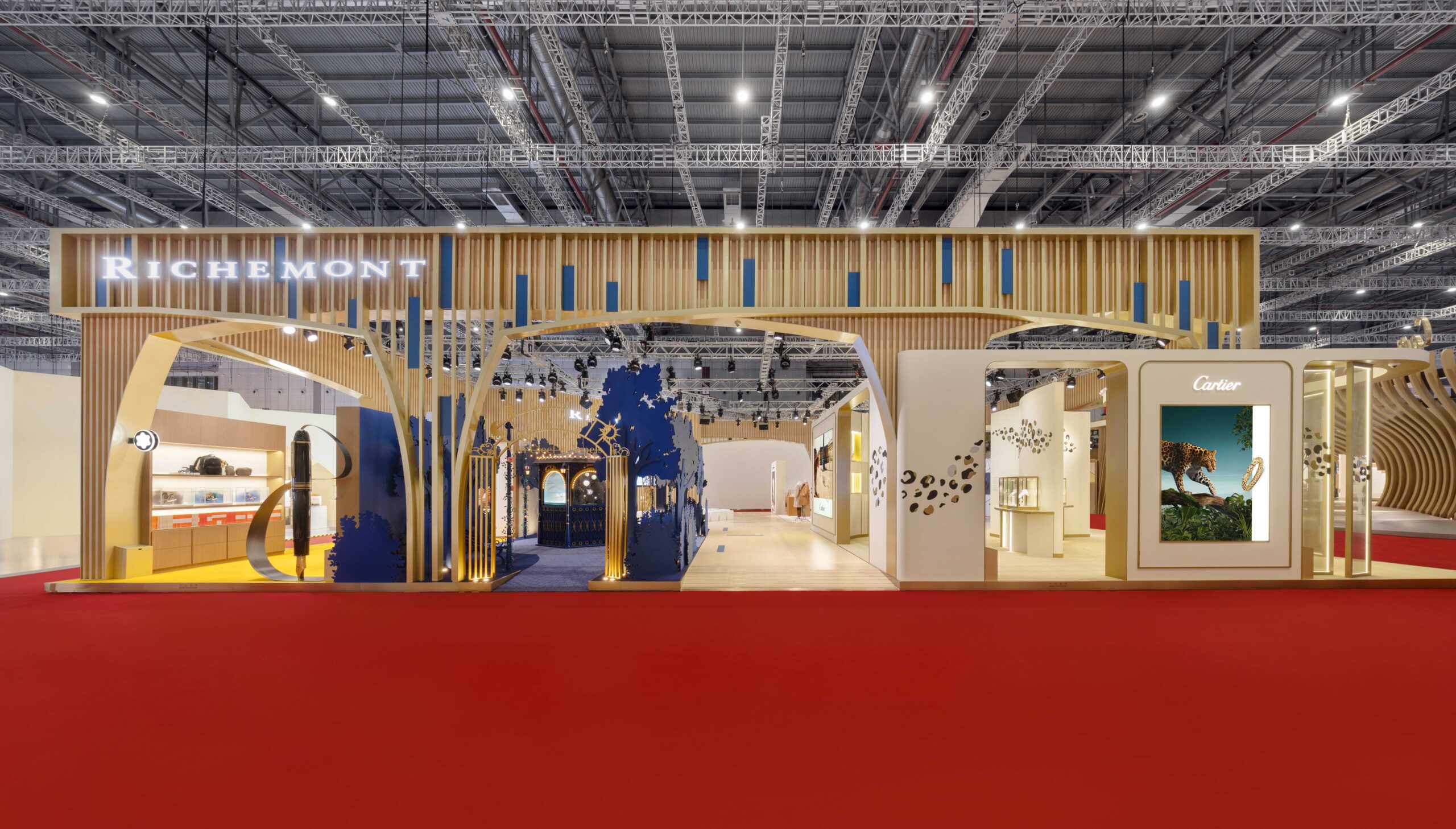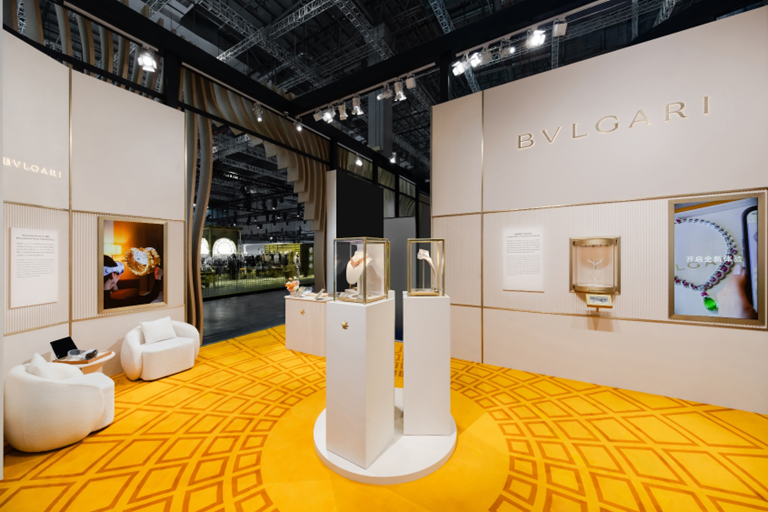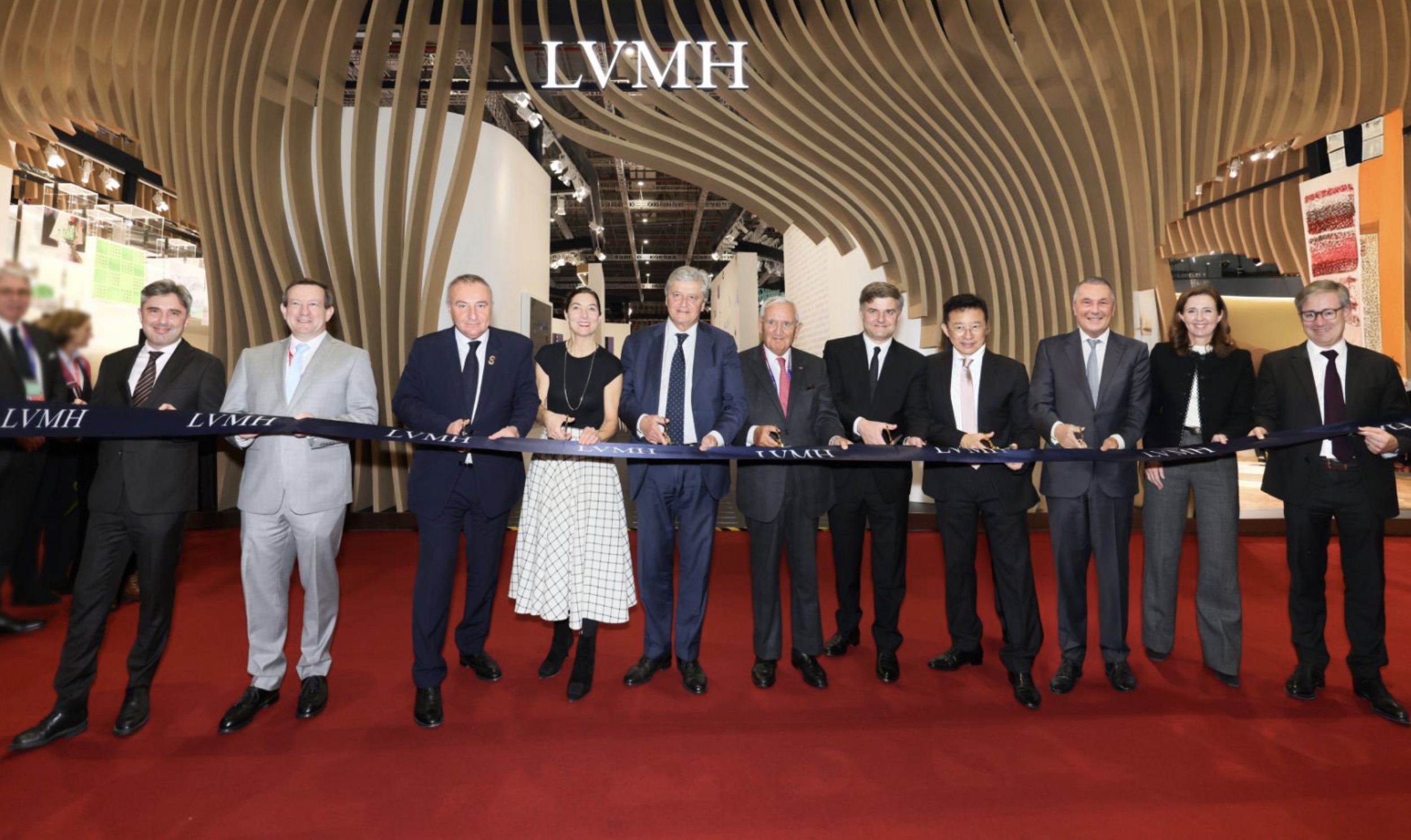In 2021, when Tiffany & Co. was acquired by French luxury conglomerate LVMH, the brand was at a critical juncture of transformation. Over the past three years, Tiffany has made significant moves to reinforce its positioning in high jewelry, including:
- Acquiring iconic and rare gemstones like Argyle Pink™ diamonds and Muzo emeralds.
- Reopening its flagship store on Fifth Avenue in New York, where the brand originated.
- Appointing celebrated French jewelry designer Nathalie Verdeille, formerly of Cartier and Chaumet, as Chief Artistic Officer of Jewelry and High Jewelry in 2021.
- Launching several new high jewelry collections inspired by the work of legendary designer Jean Schlumberger.
- Hosting frequent high jewelry exhibitions in global cities such as Shanghai, Tokyo, Paris, Madrid, and London.
Recently, Nathalie Verdeille’s second Tiffany Blue Book high jewelry collection, Tiffany Céleste, made its debut in China at a courtyard setting within the newly opened Mandarin Oriental Qianmen in Beijing. This series was unveiled across three seasons this year—spring, summer, and autumn—featuring a remarkable 13 thematic creations, a rare achievement within the industry.
During the exhibition, Luxe.CO was invited to explore how Tiffany is implementing its high jewelry strategy from sourcing to design, craftsmanship, and brand communication.
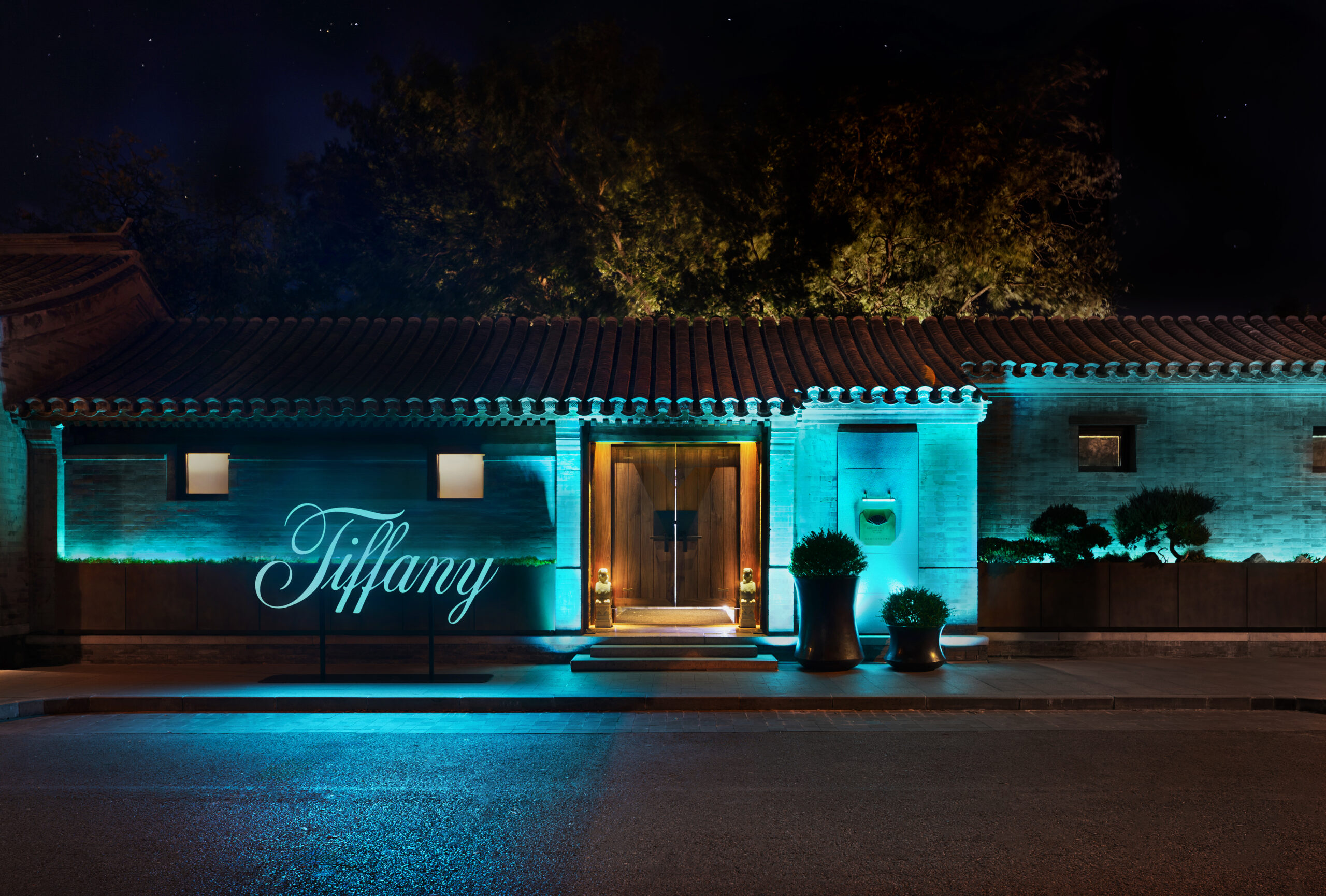
From Rare Gemstones to Natural Wild Pearls: Continued Investment in Diminishing Natural Resources
In November 2020, the closure of the Argyle Diamond Mine in Australia, the world’s most significant source of pink diamonds, marked a pivotal event in the gemstone industry as natural resources continue to dwindle.
During its final phase of operation, a limited collection of pink diamonds was preserved and offered exclusively to Tiffany in early 2022. Notably, due to the extreme conditions required for pink diamond formation, these stones typically weigh less than one carat. However, among the 35 Argyle Pink™ diamonds, three exceeded one carat, making them truly exceptional treasures.

In fact, Tiffany’s century-long commitment to rare gemstones has established the foundation for its high jewelry strategy:
In 1878, Tiffany acquired one of the world’s largest yellow diamond roughs from the Kimberley mine in South Africa, weighing 287.42 carats. Known as The Tiffany Diamond, it was famously set by Jean Schlumberger in a ribbon-like necklace and worn by Audrey Hepburn in promotional photos for the iconic film Breakfast at Tiffany’s.
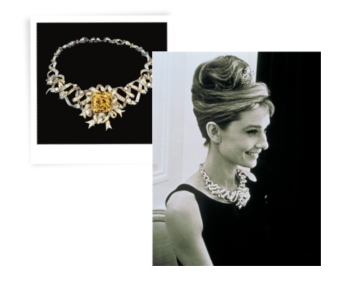
In the late 19th century, Tiffany introduced then-overlooked gemstones such as kunzite, morganite, tanzanite, tsavorite, and Montana sapphire into the world of jewelry, significantly expanding the creative potential of high jewelry.
In July 2023, Tiffany acquired the “Tiffany Muzo Emerald,” a Colombian emerald over 10 carats from the Muzo mine. Later that October, Tiffany also secured a yellow diamond rough over 71 carats, the largest found in Canada to date.

Beyond gemstones, natural wild pearls are also a central theme in Tiffany’s high jewelry creations.
In the mid-19th century, Tiffany sold a rare 0.25-ounce natural wild pearl to Empress Eugénie of France. Natural wild pearls have been nearly extinct for over a century; however, Tiffany recently forged a long-term partnership with the world’s largest private collector of natural wild pearls, Hussein Al Fardan. His exclusive pearls, under Tiffany’s creative direction, are transformed into whimsical natural motifs such as heart-shaped ivy, acorns, wings, and oak leaves.

A Century-Spanning “Dialogue Across Time”: An Innovative Interpretation of a Legendary Legacy
“I try to make everything look as if it were growing, uneven, at random, organic, in motion.”
The legendary Tiffany designer Jean Schlumberger’s famous quote perfectly encapsulates the enduring theme of Tiffany’s Blue Book high jewelry collection: nature.
Joining Tiffany in 1956, Schlumberger was renowned for transforming his keen insights into the microscopic world of nature into vibrant high jewelry creations. Inspired by an encounter with a small bird resembling a cockatoo, he introduced the iconic Bird on a Rock brooch in 1965. His other notable works, such as the berry brooch designed for First Lady Jacqueline Kennedy and the Ocean Flower brooch for actress Elizabeth Taylor, demonstrated the limitless potential of jewelry to express the power of nature.

With the fall Tiffany Céleste series, Tiffany’s Chief Artistic Officer of Jewelry and High Jewelry, Nathalie Verdeille, pays tribute to this legendary designer’s “cosmic romance.” Combining her imaginative design language with Schlumberger’s iconic elements, she brings a fresh, contemporary perspective to Tiffany’s and Schlumberger’s rich legacy.
Chinese Mythical Creatures Shine in Western High Jewelry
In ancient Chinese mythology, the phoenix—also called the “firebird”—symbolizes renewal and rebirth through flames, which aligns with its meaning in Greek, where it embodies fiery red. This mythical creature has captivated both Eastern and Western artistic traditions. In the Phoenix theme, a brooch set with fire opal captures the vivid moment of the phoenix’s rebirth in flames.

The peacock, another classic symbol in Eastern art, has long fascinated the Western world. The Freer Gallery of Art, the first museum in the U.S. dedicated to Asian art, even includes a “Peacock Room” that reflects this admiration.
In the Peacock theme, a necklace adorned with 17 cushion-cut tanzanites totaling over 108 carats draws special attention, with each feather intricately connected by triangular elements, creating a visually light and airy effect for such a weighty piece.

Iconic Designs Reimagined Through New Subjects and Materials
The most talked-about theme in this fall’s new series, Owl on a Rock, presents an owl—a symbol of mystery and wisdom—perched on a “moon rock.”
Each brooch features a unique owl, full of life and charm. While the subject has shifted from a small bird, Tiffany fans can still recognize the essence of Schlumberger’s Bird on a Rock. The owl’s talons rest on black opal, moonstone, tanzanite, and star sapphire, depicting the tranquil yet starry night sky.

Inspired by Schlumberger’s Crazy Twist motif, Verdeille’s new Unicorn theme integrates abstract modern sculptural lines. One highlight is a brooch set with a rare 25-carat cushion-cut bi-color tourmaline with a mesmerizing color gradient; other pieces incorporate rare pink and purple sapphires.

Awe for Nature Expressed through Rare Gems
Inspired by the cosmic phenomenon of a starburst, the Star Burst theme necklace is set with six cabochon-cut oval crystal opals weighing over 64 carats in total. A close look at the intricate layers of color within the central gemstones transports the viewer into a miniature universe.
Below this piece, an introduction card displays Jean Schlumberger’s original design sketches. This piece, initially left unfinished due to the unavailability of suitable gemstones, has been brought to completion by Nathalie Verdeille using newly available crystal opal. Verdeille noted that completing this piece gave her a sense of a “dialogue across time” with Schlumberger himself.

Another highlight of the exhibition showcasing the pinnacle of natural beauty is a necklace from the Wings theme, set with a Type IAB diamond exceeding 20 carats. Formed at a depth twice that of common diamonds, Type IAB diamonds are exceedingly rare; of the world’s top 20 diamonds, only one is a Type IAB, underscoring its rarity.

Infinite Possibilities in Haute Joaillerie through Creativity
Multi-functional designs are now a key area of innovation in modern high jewelry, accommodating clients’ varied wearing scenarios and needs.
The Ray of Light theme, centered around red spinel, features several convertible pieces. Notably, one necklace, which can also be worn as a tiara, marks Tiffany’s reintroduction of tiaras into its high jewelry collection after several years.

This exhibition also unveils Tiffany’s first high jewelry watch equipped with a flying tourbillon movement—the Bird on a Flying Tourbillon watch. Additionally, it includes the Bird on a Rock and Goldfish watches, inspired by Schlumberger’s iconic “Bird on a Rock” and “Fish” brooches.

Vertically Integrated Supply Chain and Continuous Enhancement of High Jewelry Craftsmanship
Tiffany has always prioritized strict control over its supply chain as a top strategic priority, focusing on two main initiatives:
The first is the relentless pursuit of craftsmanship excellence through rigorous internal production. Tiffany maintains a high percentage of in-house jewelry production within the industry. By continuously vertically integrating its jewelry manufacturing workshops in recent years, the brand has steadily increased its in-house production ratio.
In 2023, Tiffany’s parent company, LVMH Group, acquired a majority stake in the French jewelry manufacturer Platinum Invest Group, which includes Orest, a French jewelry producer founded in 1963. This acquisition significantly strengthens Tiffany’s manufacturing expertise and internal production capacity in France, especially facilitating growth in its high jewelry segment.

The second initiative involves sourcing rough diamonds directly from the source.
Most of the rough diamonds Tiffany currently uses are procured directly in bulk from diamond suppliers in Botswana, Canada, Namibia, and South Africa. In contrast, most jewelry brands rely on rough diamonds obtained from secondary or even tertiary markets.
Of particular note is Tiffany’s establishment of a rare internal gemology department dedicated to high jewelry material development. This department is led by Tiffany’s Chief Gemologist, Victoria Wirth Reynolds, who has been with the brand for over 30 years.
Conclusion
Originating in 1845 as a “catalog of novel, interesting, and practical items,” the Tiffany Blue Book has since evolved into a hallmark of high jewelry, eagerly anticipated by collectors and connoisseurs alike as an annual highlight.
In October, Tiffany arrived in the ancient capital of Beijing. Embracing local culture, the brand chose a traditional hutong courtyard near the Forbidden City to host its high jewelry exhibition, seamlessly blending Western design aesthetics with localized storytelling steeped in Chinese culture.
This community, situated along Beijing’s historic central axis, is interwoven with nearby landmarks such as the Forbidden City, Qianmen, and the Temple of Heaven. Stepping into the courtyard venue, visitors are greeted with golden decorative lines depicting classical Chinese landscapes, hand-painted cloud motifs, and ginkgo leaf elements, all creating an immersive experience that celebrates Chinese aesthetics through meticulous exhibition details.
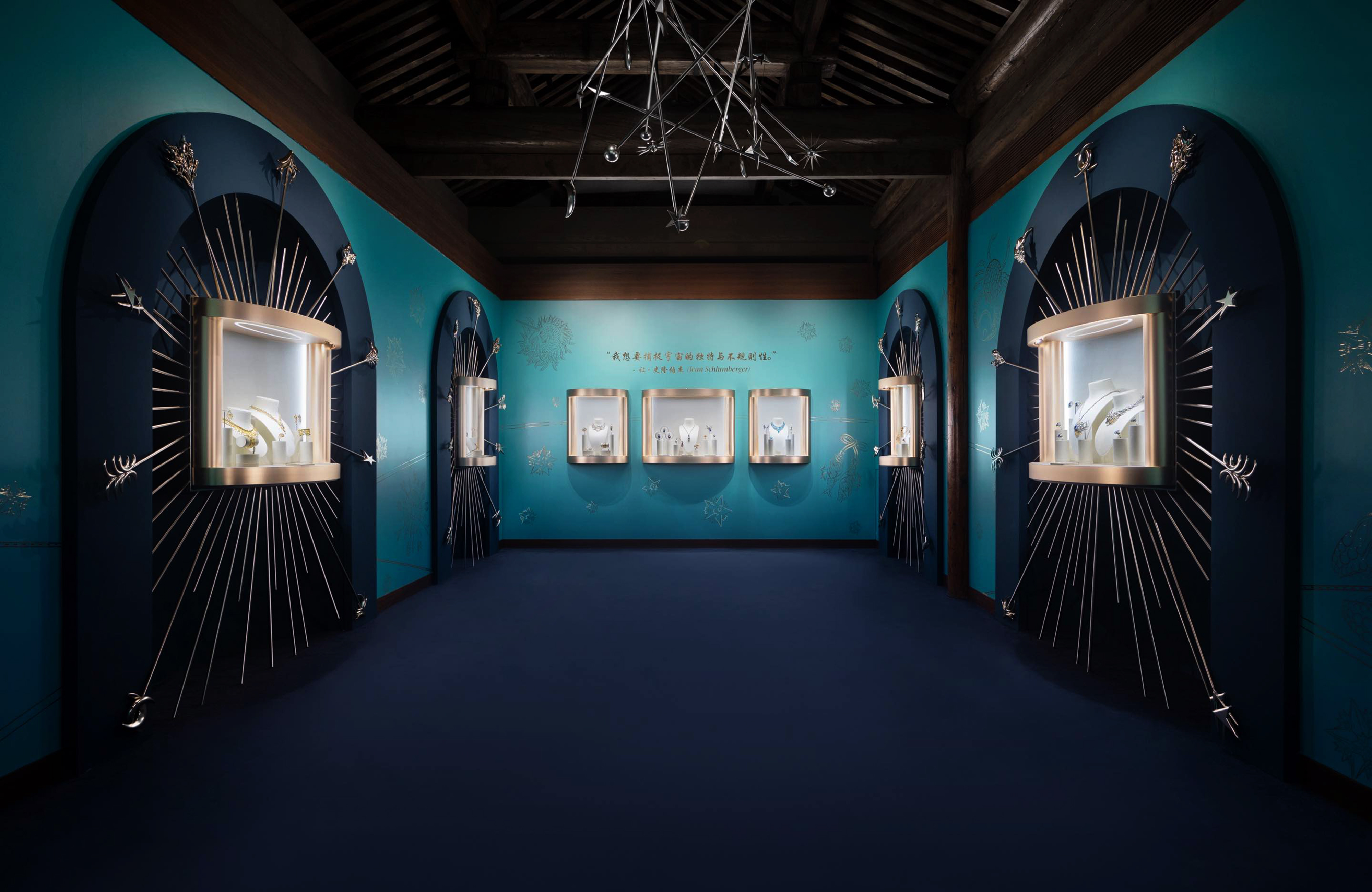
Beyond this thoughtfully curated exhibition, Tiffany has recently been intensively upgrading its stores and frequently hosting high jewelry appreciation events. In the Luxe.CO “Luxury Jewelry and Watch Brands China Power Ranking” for the first half of 2024, Tiffany ranked first, climbing four places from the same period last year. This demonstrates Tiffany’s strength and deep commitment to the Chinese market and sends a powerful message: across cycles, high jewelry brands consistently embody timelessness.
As Tiffany’s Global CEO Anthony Ledru said in an exclusive interview with Luxe.co: “China remains one of Tiffany’s primary growth markets, and we are full of confidence in our long-term development in China.”
丨Image Credit: Tiffany
丨Editor: Lezhi

